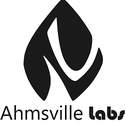Pico Dev M3
Pico Dev M3
Repository - https://github.com/ahmsville/Magnetic_rotary_encoding/tree/master/PICO%20DEV%20M3
The Pico Dev M3 is a development board based on Raspberry Pi's RP2040 microcontroller chip, the board is also a high-resolution magnetic rotary encoder when paired with a few 3D printed parts, which makes this the perfect board for applications and projects that can benefit from having a rotary encoder, a good example is making macro pads and other similar secondary controllers.

Board Features

- RP2040 chip, Dual-core Arm Cortex-M0+ processor at 133 MHz
- 264kB on-chip SRAM
- 128Mb on-board QSPI flash
- 19 multifunction GPIO pins, with 2 analog inputs
- 2 UARTs
- 2 SPI controllers
- 2 I2C controllers
- 16 PWM channels
- USB 1.1 controller with host and device support
- 8 PIO state machines
- USB type C
- Lipo charging
- onboard Button input
- Addressable Led ring (18 LEDs)
Encoder Features
- The onboard encoder features a base resolution of **36 steps, extending up to 36000** steps per revolution.
- A ring of **18 individually addressable LEDs** on board.
- Features a ball bearing which gives the encoder a significantly smoother feel compared to traditional rotary encoders.
- Customizable 3d printed encoder. Download the 3D files [here](https://github.com/ahmsville/Magnetic_rotary_encoding/tree/master/PICO%20DEV%20M3).
- Implementing the encoder is also really straightforward using the dedicated [**Libraries and Sample Codes**](https://github.com/ahmsville/Magnetic_rotary_encoding/tree/master/PICO%20DEV%20M3).
- Easy mounting options
Programming Language:
- RP2040 C/C++ SDK
- Micropython
Included in the box:
- 1 Fully assembled and tested Pico Dev M3 Board.
Projects made with PICO DEV M3:
- Pico Dev M3 Keypad

This is a 12-key macropod that uses the Pico dev m3 as its controller, the breakout board features backlit keys, headers for connecting I2C, SPI, and UART peripherals, and a header for connecting a joystick module to the Pico dev m3, you can power the keypad from the type c port on the pico dev m3 board or with a Lipo battery connected to the BAT header, taking advantage of the Lipo charge controller built into the pico dev m3.
- PIO Stepper Controller

This breakout board allows you to use this Programmable IO (PIO) on the RP2040 chip on the Pico dev m3 to individually control 3 stepper motors. This board can be used to control any 3-axis motion system, robot, or custom mechanism.

 Nigeria
Nigeria 





